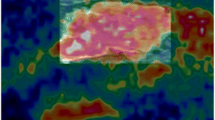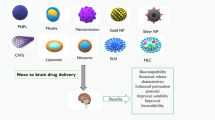Abstract
The utility of the nasal route for the systemic delivery of 17β-estradiol was studied using watersoluble prodrugs of 17β-estradiol. This delivery method was examined to determine if it will result in preferential delivery to the brain. Several alkyl prodrugs of 17β-estradiol were prepared and their physicochemical properties were determined. In vitro hydrolysis rate constants in buffer, rat plasma, and rat brain homogenate were determined by high-performance liquid chromatography. In vivo nasal experiments were carried out on rats. Levels of 17β-estradiol in plasma and cerebral spinal fluid (CSF) were determined with radioimunoassay using a gamma counter. The study revealed that the aqueous solubilities of the prodrugs were several orders of magnitude greater than 17β-estradiol with relatively fast in vitro conversion in rat plasma. Absorption was fast following nasal delivery of the prodrugs with high bioavailability. CSF 17β-estradiol concentration was higher following nasal delivery of the prodrugs compared to an equivalent intravenous dose. It was determined that water-soluble prodrugs of 17β-estradiol can be administered nasally. These prodrugs are capable of producing high levels of estradiol in the CSF and as a result may have a significant value in the treatment of Alzheimer's disease.
Similar content being viewed by others
References
Xu Huax, Gouras KG, Greenfield JP, et al. Estrogen reduces neuronal generation of alzheimer β-amyloid peptides. Nature Medicine. 1998;4(4):447–451.
Groski RA, Herlan RE, Jacobson CD, Shryne JE, Southane AM. Evidence for the exsistance of sexually dimorphic nucleus in the preoptic area of the rats. J Comp Neurol. 1980;193:529–534.
Simpkins JW, Singh M, Bishop J. The potential role for estrogen replacement therapy in the treatment of cognitive decline and neurodegeneration associated with Alzheimer's Disease. Neurobiol. Aging. 1994;15:S195-S197.
Bawarshi-Nassar RN, Hussain AA, Crooks PA. Nasal absorption and metabolism of progesterone and 17β-estradiol in the rat. Drug Metab Dispos. 1989;17(3):248–254.
Hussain MA, Aungust BJ, Shefter E. Prodrugs for improved oral B-estradiol bioavailability. Pharm Res. 1988;5(1):44–47.
Bawarshi RN. A study of the utility of the nasal route for drug administration [dissertation]. Lexington, KY: University of Kentucky; 1981.
Hussain A. Intranasal drug administration delivery. Adv Drug Del Rev. 1998;29:39–49.
Chow HS, Chen Z, Matsuura GT. Direct transport of cocaine from the nasal cavity to the brain following intranasal cocaine administration in rats. J Pharm Sci. 1999;88(8):754–758.
Sakane T, Akizuki M, Yamashita S, et al. Direct drug transport from the rat nasal cavity to the cerebrospinal fluid: the relation to the dissociation of the drug. J Pham Pharmacol. 1994;46(5):378–379.
Sakane T, Akizuki M, Yamashita S, et al. Direct drug transport from the rat nasal cavity to the cerebrospinal fluid: the relation to the molecular weight of drugs. J Pharm Pharmacol. 1995;47:379–381.
Sakane T, Akizuki M, Yoshida M, et al. Transport of cephalexin to the cerebrospinal fluid directly from the nasal cavity. J Pharm Pharmacol 1991 Jun;43(6):449–51.
Kao HD, Traboulsi A, Itoh S, Dittert LW, Hussain A. Enhancement of the systemic and CNS specific delivery of L-dopa by the nasal administration of its water soluble prodrugs. Pharm Res. 2000;17(8):978–984.
Huang CH, Kimura R, Nassar R, Hussain A. Mechanism of nasal absorption of drugs II: absorption of L-tyrosine and the effect of structural modification on its absorption. J Pharm Sci. 1985;74(12):1298–1301.
Huang CH, Kimura R, Nassar R, Hussain A. Mechanism of nasal absorption of drugs I: physicochemical parameters influencing the rate of in situ nasal absorption of drugs in rats. J Pharm Sci. 1985;74(6):608–611.
Hussain A, Schurman P. Thiol esters II: a kinetic study of hydrolysis and aminolysis of propionyl thiocholine iodide and 2-dimethylaminoethiol propionate. J Pharm Sci. 1969;58(6):687–693.
Bruice T, Benkovic S. Bioorganic Mechanism. W. Benjamine, Inc. N. Y. 1966:134.
Author information
Authors and Affiliations
Corresponding author
Additional information
Published: March 25, 2002.
Rights and permissions
About this article
Cite this article
Al-Ghananeem, A.M., Traboulsi, A.A., Dittert, L.W. et al. Targeted brain delivery of 17β-estradiol via nasally administered water soluble prodrugs. AAPS PharmSciTech 3, 5 (2002). https://doi.org/10.1208/pt030105
Received:
Accepted:
DOI: https://doi.org/10.1208/pt030105




